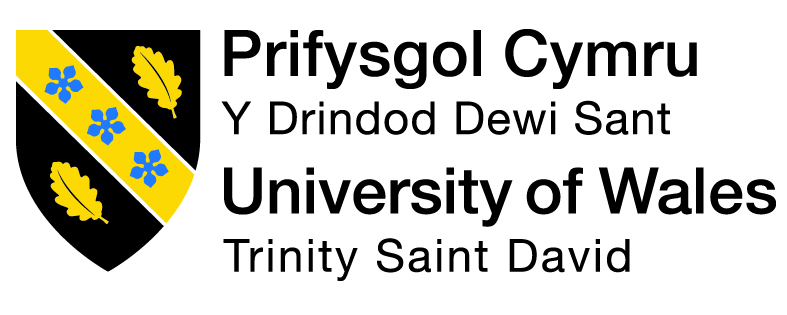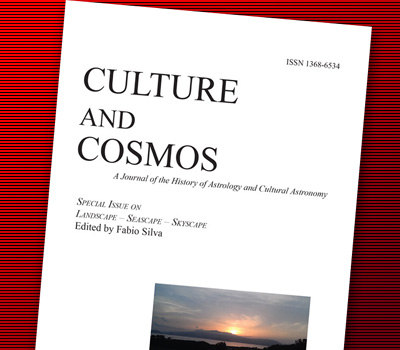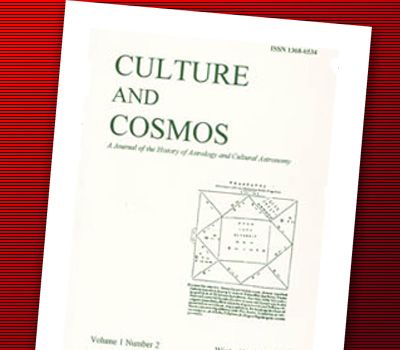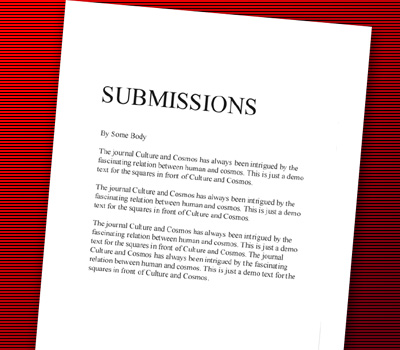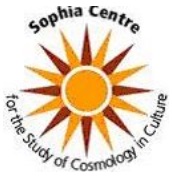We are currently seeking submissions for future volumes of Culture and Cosmos.
Volume 7, No. 1
Foreword: Galileo as Believer
Nick Kollerstrom
Abstract
In October 1633, Galileo confided to his daughter that he felt 'as though his name had been stricken from the roll call of the living'. This was in response to the severe judgement that Pope Urban VIII had pronounced against him on 22 June, that he was 'vehemently suspected of heresy.' Dava Sobell's account has well brought out how Galileo would never accept or sign any charge brought against him of heresy. We may compare this well-known verdict with the earlier and well-forgotten charge which the Venetian Holy Office brought against him in 1604, of 'living as a heretic,' a charge concerned more with his lifestyle than with his beliefs.
An English translation of this 1604 event is here published, for the first time.
Galileo is well known for his deep scepticism towards the Aristotelian philosophy and cosmology of his time. He attacked it with trenchant arguments. Maybe, he demolished it. This had led most science historians to misperceive him as being as sceptical as themselves over wider issues, such as in Brecht's play or Arthur Koestler's account in The Sleepwalkers, which found him 'wholly and frighteningly modern'. As an antidote to such, one could start off with the address which as a 24-year old still living in Pisa he gave before the Florentine Academy. He gave some lectures on 'The Shape, Place and Size of Dante's Inferno' in which he attempted 'to determine certain physical characteristics of Dante's Inferno.' While the heavens visible to the senses had all been mapped out, 'how much more wonderful should we consider the study and the description of the place and size of hell which lies in the bowels of the earth, hidden from all the senses and by experience known by no-one'.
In this early period Galileo still accepted the geocentric world-view. Having been expelled from the University of Pisa as a troublemaker without a degree he was scraping by on maths tuition work here and there. His lectures grappled with the dwelling-place of Lucifer and his fallen angels in the lower vortex of the Inferno, as well as computing how the opening to the underworld was covered with a vault of 404 15/22 miles in depth. Dante was the icon of Florentine culture, and this prestigious literary society was established by Cosimo I the Medici grand duke of Tuscany. Galileo described the eight levels of the inferno and computed the length of Lucifer's arm. We should be grateful to James Reston for bringing out in his fine biography of Galileo that one finds no hint of irony or scepticism in these lectures on this topic. Accompanied by diagrams of the underworld, they must have been a gripping experience.
Looking through the list of books in Galileo's posthumous library, I could find none that one might interpret as sceptical towards astrology. Favaro in the classic (but widely ignored) essay here reprinted implies that he in some degree lost his belief in the topic in later years, but in the pages that follow there is little basis for that claim. After Descartes and Newton, astronomy could be practised with no reference to astrology. However let us be crystal-clear that in Galileo's day the purpose of doing astronomy was to prepare tables for drawing up horoscopes, for one's patron, or for medical purposes or whatever. In France there was the sceptical Jesuit movement of Gassendi and Descartes against astrology in the 1630s. However, there was nothing comparable in Italy in this period. In the excepts of correspondence here translated for the first time, one can see how the mathematici of Italy discussed astronomical and astrological issues; when a prediction did not work they considered the principles involved: there was nothing unusual or out of line in the way Galileo practiced astrology, it was merely something shared and taken for granted by him and his colleagues.
The question as to what scepticism meant in Italy at that time would be an interesting one, and one could focus on his friend Cremonini, the philosophy lecturer at Padua, who was found guilty of teaching 'mortalism,' that the soul did not survive death. The April 1604 Inquisition judgement, whose quattrocentenary we here commemorate, found no trace of such heretical beliefs in Galileo. It merely heard some rather shocking details of his sex life and domestic quarrels (the bawdy Aretino volume alluded to has just been reprinted).
More significantly, 2004 marks the four hundredth anniversary of the new star called 'Kepler's Star' which was the last galactic supernova ever visible in the sky: no other has been seen since.
In October of 1604 Galileo gave some popular lectures on this topic which marked his first public appearance as an astronomer. Historians of science always omit his explanation of what produced it, namely that it had been generated by the Mars-Jupiter conjunction that took place a day or so before it was seen; the nova was only a few degrees away from this conjunction, in the sky. He then explained how the qualities of Mars and Jupiter had combined to produce the sparkling object then evident in the night sky.
The theological issue of free will raises its head in this anniversary, with the Venetian Holy Office condemning in 1604 the cheerful way Galileo would give death predictions, or rather length-of-life predictions, to his clients. Later on the pope with whom Galileo was destined to clash, Urban VIII, was personally addicted to astrology and was accustomed to acquiring horoscopes of his cardinals and informing them of their due death-dates. Clearly, this was an unstable situation.
Accounts of how Galileo discovered the four moons of Jupiter through his telescope tend to omit the fact that, according to Galileo, the Maker of Stars was over those nights a-whispering to him. Indeed, we can read about this only in French: Isabelle Pantin's commented on Galileo's Introduction to his Sidereus Nuncius of 1610: 'Galilée se présente ici comme l'interprète direct de la volonté du Créateur, comme une sorte de prophète auquel Dieu envoie des signes. Plusieurs allusions à la "grace divine" et au "destin" sont discrètement glissées dans le Sidereus' The Maker of Stars had convinced him by 'clear arguments,' Galileo there explained, framed in rather Neo-Platonic terms, about Jupiter, its attributes, and the horoscope of the young Cosimo II. Galileo experienced a destiny as present in this discovery, that he had been able to make it because of his connection with the Medici family, and this meant that the new stars really belonged to this dynasty and to the young Cosimo II in particular. Historians tend to describe this as a clever ploy whereby he obtained his highly prestigious employment as the Medici court philosopher; although it was that, it was also a process in which he truly believed. And, as he explained to the young Cosimo, for it to work properly it was necessary that he, Cosimo, believed it too.
There is not very much remaining about Galileo's practice of and attitude towards astrology, highly censored as it has been down through the centuries, which is why we can be confident that it is all gathered together in this short volume. What was distinctive about him was not that he believed or practised astrology, but that, like Kepler, he combined this with his belief in the new, heliocentric universe.

